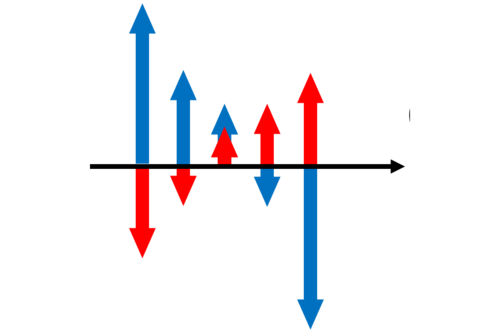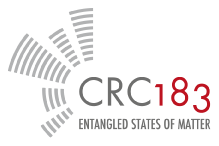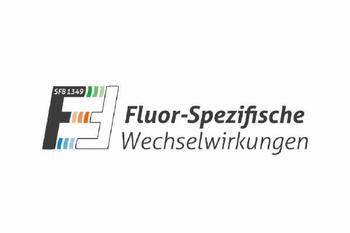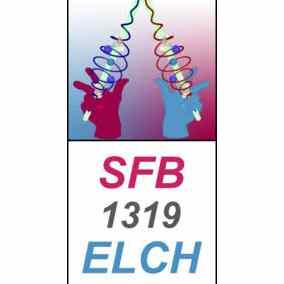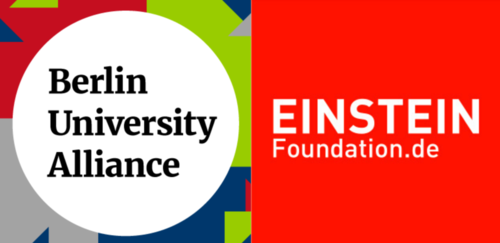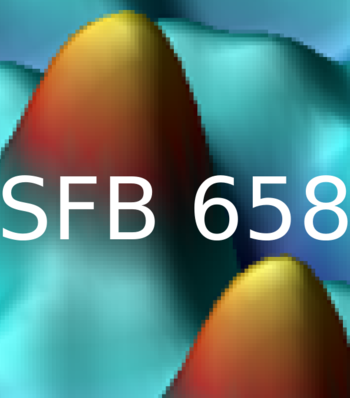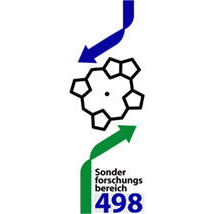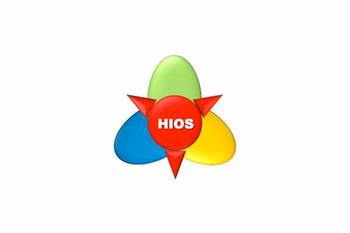Research Consortia: Collaborative Research Centers, Excellence Cluster and Research Units
Interdisciplinary and international cooperations for outstanding scientific achievements
Our department initiated the university's first Collaborative Research Center (CRC), funded by the German Research Foundation, in the 1970s. Since then, the Department of Physics has been coordinating dozens of research consortia and cooperating with national and international academic and scientific institutions.
To achieve outstanding scientific results and uncover unique insights into nature, we continuously develop new projects across disciplines and borders. In 2021, the very first Einstein Research Unit of the Berlin University Alliance began its work. In 2023, the first ERC Synergy project of Freie Universität Berlin was launched at our department.
In 2025, a new Cluster of Excellence, "Center for Chiral Electronics," and a new Collaborative Research Center (CRC), "Heterostructures from Molecules and Two-Dimensional Materials," were established.
Excellence Cluster EXC 3112 - Center for Chiral Electronics
The ambitious research program aims to develop concepts for energy-efficient electronics.
Chirality refers to the property of an object that cannot be superimposed on its mirror image through rotation or translation. This feature is common in nature and technology and often imparts special stability.
The Center for Chiral Electronics (CCE) aims to lay the foundation for next-generation electronic technologies by exploring the unique properties of chirality in solid-state and molecular systems. Through interdisciplinary research at the interface of physics and chemistry, we seek to develop energy-efficient, high-performance materials that meet the global demand for sustainable digital infrastructure.
Since 2026
Co-Spokesperson: Prof. Dr. Katharina Franke
Funding: approx. € 53 M
Involved research groups: Bolotin, Bittl, Brouwer, Franke, Kampfrath, von Oppen, Sharma, Weinelt
EXC 3112 "Center for Chiral Electronics"
jointly with Martin Luther University and University Regensburg
CRC 1772 - Heterostructures of Molecules and Two-Dimensional Materials
This CRC will bridge two areas of modern natural science – the design of organic molecules and the properties of two-dimensional materials. In the CRC, scientists aim to create novel nanomaterials using tailor-made inorganic and organic molecules.
To develop a fundamental understanding of the key properties of such heterostructures, CRC members will employ experimental methods such as state-of-the-art spectroscopy and microscopy, complemented by theoretical modeling and machine learning. In this way, the characteristics of the heterostructures will be predicted through large-scale simulations and verified at the microscopic level.
In the long term, this interdisciplinary initiative, situated between physics and chemistry, seeks to design components that lead to novel phases of matter and to synthesize new materials through altered reaction pathways.
Since 2025
Spokesperson: Prof. Dr. Stephanie Reich
Funding: € 10.6 M
Involved research groups: Bolotin, Franke, Reich, von Oppen, Seiler, Weinelt
CRC 1772
CRC/TRR 227 - Ultrafast Spin Dynamics
The research center focuses on the electron spin as one of key quantum properties determining structure and dynamics of matter and investigates the ultrafast change of magnetic systems at the nanoscale.
The individual subprojects aim to advance the scientists' understanding of the underlying processes and to provide key elements for spin-based information technology, which also functions in the terahertz frequency range.
Start: 2018
Spokesperson: Prof. Dr. Martin Weinelt
Funding: € 30 M
Involved research groups: Bolotin, Brouwer, Franke, Kampfrath, Kuch, Seiler, Weinelt
CRC/TRR 227
jointly with Martin Luther University Halle-Wittenberg
TRR 183 - Entangled States of Matter
The scientific mission is to exploit the fundamental laws of quantum mechanics to engineer condensed matter systems that materialize entanglement in a tangible manner.
The long-term vision is to bring the fascinating physics of entanglement closer to the macroscopic realm and to design novel condensed matter device architectures for ‘topological quantum computation’.
UniSysCat - Unifying Systems in Catalysis
Cluster of Excellence of the Berlin University Alliance
How to understand and utilize networks in catalysis: More than 85 percent of all products come into contact with a catalyst during production. Catalysis research is the main driver of “green chemistry,” which focuses on sustainability and resource conservation.
Scientists aims to decipher reaction networks in chemical and biological catalysis in space and time so that they can then be controlled, predicted and modified. Which key parameters enable and control chemocatalytic and biocatalytic networks? How can chemical and/or biological processes be coupled to create catalytic systems with new functions? These are the central research questions of UniSysCat.
FOR 2724 - Thermal Machines in the Quantum World
Theoretical and experimental physicists investigate the question of how thermal machines can be constructed and realized in the quantum world.
They want to provide experimental evidence that the rules of thermodynamics do indeed need to be changed when it comes to the smallest machines on the nanoscale.
Start: 2018 - 2025
Spokesperson: Prof. Dr. Jens Eisert
Funding: € 2m
Involved institutions: Freie Universität Berlin, Universität Stuttgart, Weizmann Institute of Science, Heidelberg Universität, Johannes Gutenberg-Universität Mainz, Universität Ulm, Universität Kassel, Vienna Center for Quantum Science and Technology
FOR 2724
Current
Research Centers We Currently Contribute to
The overarching aim of this CRC is to understand the individual and combined contributions of the physicochemical key parameters to hydrogel (dys)function in health and disease.
Our key objective is the molecular definition of mucus (structure, properties and dynamics at the molecular level). Our chemical, physical, medical and modelling expertise will be applied to specific key questions: What is the role of the individual hydrogel components, i.e., mucins, proteins, salt and water, in the complex process of their network formation and function?
Spokesperson
Prof. Dr Rainer Haag, Department of Biology, Chemistry, Pharmacy
Involved groups
CRC 1449
The researchers want to understand and control the complex interactions that can arise from fluorinated building blocks in chemical systems. They want to discover how such interactions affect a wide range of physicochemical properties and chemical reactivities. These include the effects of fluorine-specific interactions on the properties of functional materials, their influence on various catalytic processes and the biochemical and pharmacological effects on a range of biological systems.
Funding
€ 9.1 m
Spokesperson
Prof. Dr Sebastian Hasenstab-Riedel, Freie Universität Berlin
Involved groups
Involved universities
- Freie Universität Berlin
- Humboldt University Berlin
- Technical University Berlin
- BAM - Bundesanstalt für Materialforschung und -prüfung
- University of Bayreuth
- University of Stuttgart
SFB 1349
This CRC focuses on the investigation of a microscopic quantum mechanical understanding of individual chiral molecules in the gas phase under perfectly defined experimental conditions. It employs the most advanced tools of experimental and theoretical gas phase atoms, molecular, and optical/quantum optical (AMO) physics for control and manipulation of chirality on the single-molecule level. With the help of extreme light, covering all relevant excitation regimes in terms of energy, intensity, and temporal resolution, it addresses the full chiral quantum system of electrons and nuclei in each individual molecule.
Coordinating university
University of Kassel
Involved group
CRC 1319
Modeling and simulation techniques for various predictions
The scientists from meteorology, geology, biochemistry, mathematics and physics develop modeling techniques that enable a controlled distribution of computational degrees of freedom across the scale cascade. They elaborate simulation techniques for the prediction of e.g. earthquakes or large amounts of precipitation.
Spokesperson
Prof. Rupert Klein, Freie Universität Berlin
Involved groups
CRC 1114
How does a distinct set of molecular switches control the spatio-temporal regulation of a diverse range of biological processes?
Biological signals are generated by molecular switches. These allow temporal and spatial coordination of a wide range of cellular processes. The overarching goal of our research consortium is to functionally analyze how a distinct set of molecular switches controls the spatio-temporal regulation of a diverse range of biological processes.
Intriguingly, in many cases, the molecular events that are downstream of the activation of a molecular switch trigger a cellular switch such as cell fate decisions between survival and apoptosis. To investigate the molecular mechanisms that link molecular switches to cellular switches in living cells, we use advanced chemical biology tools such as photoactivatable membrane lipids.
Coordinating university
University of Heidelberg
Vice-coordination
Freie Universität
Involved research group
CRC/TRR 186
Completed
Research Centers and Consortia We Coordinated
First Einstein Research Unit of the Berlin University Alliance
Near-term quantum computational devices and quantum processors: How can quantum computers revolutionary change the computational power of computers? What new insights do quantum computers offer for high-energy physics or quantum chemistry?
Berlin's scientists brought together expertise in theoretical and experimental physics, applied mathematics, computer science, and machine learning. They developed novel approaches and technical solutions for quantum devices.
Spokesperson
Prof. Dr. Jens Eisert
Involved Research Groups
Eisert, Koch, Brouwer, von Oppen
Participating Institutions
- Freie Universität Berlin
- Humboldt-Universität zu Berlin
- Technische Universität Berlin
- Charité - Universitätsmedizin
What role does the movement of hydrogen ions (protons) play in the function of proteins?
The SFB 1078 has set itself the goal of introducing a new mechanistic principle into the understanding of the mechanisms of action of proteins: the control and coordination of complex protein function through protonation dynamics.
The proton movements in the functionally important networks of hydrogen bonds occur on different time and length scales. This ranges from femtoseconds to seconds and from less than 0.1 nanometers to more than 10 nanometers. To better understand the processes, experiments were combined with theory and simulations.
Key Model Protein Systems
Different parts of the protonation dynamics were investigated on two proteins that are important for biological energy conversion: Oxygen reduction, which is coupled to proton pumping by cytochrome c oxidase, and water oxidation, which is catalyzed by photosystem II. It has been found that major structural changes can slow down or even prevent electron transfer in proteins. Light-induced conformational changes play a crucial role in the mechanism of phytochromes, channelrhodopsins and pH-controlled proton channels. The functionality of the latter was compared with that of the pH-controlled viroporins. These changes are often associated with or driven by proton movements.
Development of New Methods for Membrane Bound Proteins
A key aspect of research in the SFB 1078 was the development and adaptation of various experimental and theoretical methods to the requirements of the specific protein systems. These included the incorporation of non-canonical amino acids into proteins, time-resolved serial femtosecond X-ray crystallography, nuclear magnetic resonance spectroscopy at high magnetic fields, time-resolved electronic and vibrational spectroscopy over a large dynamic range, and multiscale modeling approaches from quantum mechanics, molecular dynamics simulation and their hybrids. The application of such advanced techniques to the SFB's proteins was challenging as most of them are integral membrane proteins.
The CRC 1078 achieved its original goal of comprehensively understanding protonation dynamics as an important element of the functional mechanisms of five selected protein families and thus to understand this process as a generic principle of protein function.
Spokesperson
Professor Dr. Holger Dau (2013 - 2017)
Professor Dr. Joachim Heberle (2017 - 2024)
Involved research groups
Alexiev, Clementi, Dau, Heberle, Heyne, Kozuch, Netz, Schlesinger as well as Block, Imhof, Bondar
Key figures
- € 29.9 m of public funding
- more than 430 publications
- 8 professorial appointments
- 72 doctorates completed
Participating institutions
- Freie Universität Berlin
- Technical University of Berlin
- Technical University of Dresden
- Humboldt University of Berlin
- Charité – Universitätsmedizin Berlin
- Leibniz Institute for Molecular Pharmacology
- Justus Liebig University Giessen
- Hebrew University of Jerusalem in Israel
CRC / SFB 1078
The collaborative research centre investigated molecular switching processes driven by external excitations in well defined molecular systems at solid surfaces. Scientists focused on reversible conformational changes of individual molecules and ensembles leading to measurable changes of functional (e.g. optical, electronic or magnetic) properties of the system. The focus on elementary processes included investigation of all individual steps, physical parameters and interactions which induce and influence the process of molecular switching.
Research grounded on various complementary methods from synthesis of molecular systems, characterization of structural and electronic properties by quantitative surfaces sciences techniques and theoretical modelling. The long-term goals were to develop novel functionalities, like cooperative switching processes, and criteria for applications in molecular functional devices.
Spokesperson
Professor Dr Martin Weinelt, since 7/2015
Professor Dr. Felix von Oppen, till 7/2015
Involved research groups
Brouwer, Fumagalli, Franke, Kuch, von Oppen, Reich, Weinelt, Groß, Pascual, Tegeder
Achievements
- around 430 publications
- 85 doctorates completed
- 5 strategic appointments
- 7 subproject leaders transfered
Participating institutions
- Freie Universität Berlin
- Humboldt University Berlin
- Technical University Berlin
- University Potsdam
- Fritz Haber Institute FHI)
- Paul-Drude-Institut für Festkörperelektronik (PDI)
SFB 658
Nature utilizes protein-cofactor interactions in order to optimize biological functions. The research center focused on the investigation of the interaction of the protein with organic cofactors and metal ions. These interactions were investigated using an approach combining various techniques from molecular biology, biochemistry, structure analysis, spectroscopy and theory.
The collaborative research centre consisted of seventeen scientific projects grouped according to the research goals focussed on the biological processes of electron and excitation energy transfer, conformational changes and signal transduction, and enzymatic cleavage of molecular hydrogen and water oxidation.
Spokesperson
Involved groups
Research Group Antontik / Stehlik, Research Group Weber, Research Group Haumann / Dau, Research Group Heyne
Participating institutions
- Freie Universität
- Charité - Universitätsmedizin Berlin
- Humboldt University Berlin
- Technical University Berlin
- Leibniz-Forschungsinstitut für Molekulare Pharmakologie (FMP)
The research goal was to learn to control electron and nuclear constellation in different material systems using ultrashort laser pulses. The motion sequences triggered in this way were to be characterized in time and, if possible, guided by appropriate design of the irradiated light fields in such a way that a stable, detectable final state was achieved.
In the first funding period, the focus was on the analysis of such photo-induced dynamic processes, both experimentally and theoretically. The optical excitation of the system was mostly performed with a pump pulse as short as possible, while the resulting change of the nuclear coordinates of the system was interrogated with a sample pulse that was also as short as possible and delayed in time.
In the second funding period, the goal of control was also increasingly realized by using more complex excitation fields. In the experiment, the researchers used suitable modulators for this purpose; complementary to this, the theory of optimal control was expanded. And so, in the area of small, still manageable systems with few active degrees of freedom, there was a very gratifying convergence of theory and experiment, paving an essential part of the way toward more complex systems. Even in the more complex systems, the experimental results, in close cooperation with theory, offered very detailed insights into the dynamics of ultrafast photoinduced reactions.
Spokesperson
Participating institutions
- Freie Universität Berlin
- Helmholtz Zentrum Berlin
- The Hebrew University of Jerusalem
- Fritz Haber Institut der Max-Planck-Gesellschaft (FHI)
- Max Born Institute for Nonlinear Optics and Short Pulse Spectroscopy
- Humboldt University Berlin
- Tel-Aviv University
- University Potsdam
SFB 450
The researchers investigated ultrathin films consisting of a few monolayers of atoms and their electronic and magnetic properties as well as lattice vibrations and transport properties. Their goal was to better understand the relationship between structure, morphology and the physical properties of thin metallic films.
Spokesperson
Prof. Dr Karl-Heinz Rieder
Paricipating institutions
- Freie Universität Berlin
- Humboldt University Berlin
- Technical University Berlin
CRC 290
The scientific objective was to investigate the dynamics of physical and chemical subsequent processes after deposition of a local excitation energy in a molecular aggregate, which could be located in different environments. In addition to magnetic resonance methods, time-resolved spectroscopy with ultrashort laser pulses was used here for the first time, with which the electron dynamics after photoexcitation could be followed with a time resolution in the femtosecond range, allowing the observation of completely new effects.
Spokesperson
Prof Dr Dietmar Stehlik
Funding
DM 37.9 m
Participating institutions
- Freie Universität Berlin: Department of Physics, Department of Chemistry
- Fritz Haber Institute of the Max Planck Society
- Technical University Berlin
- Hahn Meitner Institute
Downloads
The researchers investigated the electronic structure of interfaces and solid/electrolyte interfaces as well as heterogeneous reactions at interfaces.
Spokesperson
Prof. Bennemann
Funding
DM 25.5m
Participating institutions
- Freie Universität: Department of Physics, Department of Chemistry
- Fritz Haber Institute
- Technical University Berlin
CRC 161 was one of the first collaborative research centers at Freie Universität. The field of work was the investigation of hyperfine interactions in excited nuclear states, molecules, and free atoms, as well as the electronic structure of condensed matter.
Spokespersons
Wilking (1972–73), Hüfner (1973–74), Matthias (1974–75) und Gabriel (1975–86)
Research Centers We Contributed to
The research center focuses on how to control dissipative structures in nonlinear dynamical systems far from thermodynamic equilibrium. An interdisciplinary team of applied mathematicians, theoretical physicists, and computational neuroscientists goes beyond merely describing the intriguing dynamics of self-organizing nonlinear systems. They aim to develop novel theoretical approaches and methods of control, and to demonstrate how to apply these concepts to a selection of innovative self-organizing systems ranging from condensed hard and soft matter to biological systems.
How can we combine significantly different classes of materials in hybrid inorganic/organic systems (HIOS) so that we realize substantially improved and potentially novel optoelectronic functionalities?
In the first phase, scientists investigated and comprehensively understood the fundamental chemical, electronic and photonic interactions in inorganic/organic hybrid systems. They discovered novel hybridized quantum states and coupled excitations at HIOS interfaces. Besides, the fundamental limit of the modern inorganic bulk semiconductors used so far was identified.
Currently, researchers are working to exploit the extremely high surface-to-volume ratio and strong light-matter interaction of atomically thin monolayers of transition metal dichalcogenides. They aim to determine the fundamental interactions and optoelectronic properties of these heterostructures to achieve maximum coupling and functionality.
What are the collaborative research centers? What are the research units?
Collaborative Research Centres, or CRC, are long-term university-based research institutions established for up to 12 years in which researchers work together within a multidisciplinary research programme.
CRC/Transregio (TRR) is proposed and carried out jointly by two or three universities. It allows close cooperation between these institutions and the researchers based there, including the shared use of resources.
A Cluster of Excellence is a large, interdisciplinary research network based at one or more universities in Germany. It is funded through the Excellence Strategy of the German federal and state governments. The aim is to promote outstanding research at German universities and enhance their international competitiveness.
DFG Research Unit, or FOR, is an interdisciplinary association of several scientists who collaborate closely on specific medium-term research projects for six years.
Einstein Research Units are designed to facilitate long-term research collaborations in strategically important research fields of the Berlin University Alliance.
Focus Areas form academic and scientific networks and working platforms for interdisciplinary collaborative research. They are platforms for discussing innovative research topics, and for the design and development of new projects from proposal to maturity.
ERC Synergy projects are scientific initiatives conducted by groups of two to four principal investigators to jointly address ambitious research problems and enable substantial advances at the frontiers of knowledge, fostering unconventional approaches and investigations at the interface between established disciplines.


